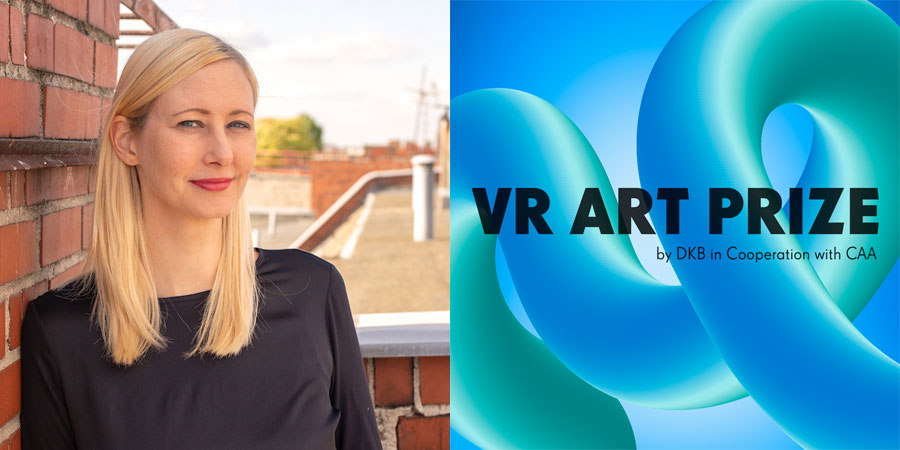Tina Sauerländer is curator for VR art, author and founder of the exhibition platform peer to space. In 2018 she was part of the international jury of the first edition of VRHAM! With the new VR art award she now has new tasks:
For the first time, Deutsche Kreditbank (DKB) is awarding an art prize for VR in cooperation with the Contemporary Arts Alliance (CAA) Berlin. What are your tasks as artistic director of this award?
TINA SAUERLÄNDER: I am very happy to be the artistic director of this first VR ART PRIZE of DKB in cooperation with CAA! One of my tasks is to organize the open call and the selection process. At the end of August our jury of experts will select 5 awardees. With these awardees I will then work on the implementation of their ideas for the installations which will be shown together with their VR works in the exhibition in the Haus am Lützowplatz from 27.2.2021. With this large institutional exhibition we want to set new standards for establishing VR art in Germany.
What is the portential of this art form which is still difficult for many to imagine and to experience?
TS: VR art has been gaining an increasing presence for several years now. VR festivals like VRHAM! have come into being, institutions have begun to integrate VR artworks into their exhibitions, and film festivals have their own VR sections. VR art is being made more and more accessible to a broad public. This is great! We have also started a podcast (available in German only) on the topic and are doing educational work. In “Virtuos Virtuell” Tanja Lepczynski and I talk to different guests about VR art once a month. And in addition to these great developments, I am happy when many people use VR glasses at home for many different experiences.
VRHAM! Festival is very familiar to you in the physical version. Now the festival will be moved into digital space and VR art can be experienced virtually. Is this a concept for the future?
TS: It is a pity that VRHAM! cannot take place physically this year, but I am very excited about the virtual version! This will certainly be a concept for the future, although I don’t think that the virtual version will completely replace or should replace the physical version. We can take advantages of both worlds! As social beings it is nice to meet in real space, but festivals and conferences in the digital space allow more people to participate, see the works and network in virtual places. This reduces travel costs and protects the environment.

